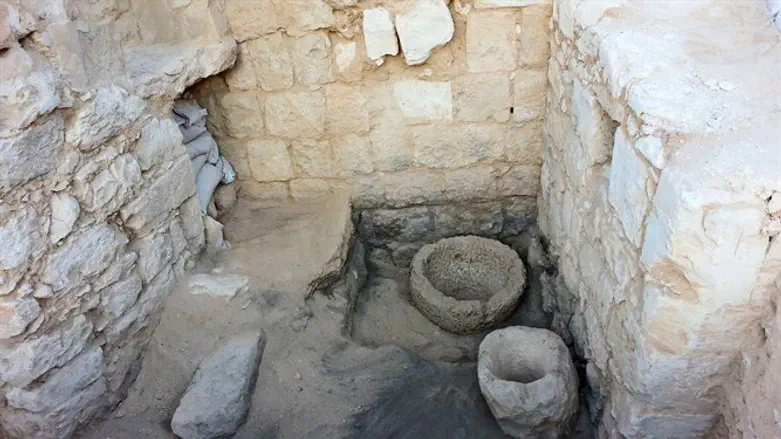
In archaeological excavations at Ovdat conducted by the Antiquities authority and DePaul University and funded by a Fulbright scholarship, members of the Negev Mountain Field School discovered a meter-thick layer in a structure which confirmed unequivocally that sheep and donkeys had existed here in ancient periods.
The structure, which presumably served as a stable in the Byzantine period, was discovered by archaeologists, led by Dr. Scott Bucking of DePaul university and Dr. Tali Erikson-Gini of the Antiquities Authority.
The stable, which was found in one of the caves hewn into the mountain, served as an auxiliary stable for the inhabitants, who were apparently monks. It was divided into a number of rooms decorated with crosses. Stone basins were also found which served for storing food and as troughs for feeding the animals.
According to Buckley the definitive identification of the stable came from a thick layer of organic materials (donkey and sheep dung) on the floor of the structure. Apparently the structure was destroyed during the earthquake which destroyed Ovdat in the 7th century C.E.
The excavation also revealed seeds and tiny organic remnants which could shed light on the way the structure was used and on what people used to eat at the time. The scholars hope that grape seeds found at the site, which were well preserved by the dry climate which exists in the region, will enable them to extract DNA from the original vines and identify the types of grapes which grew in the region.